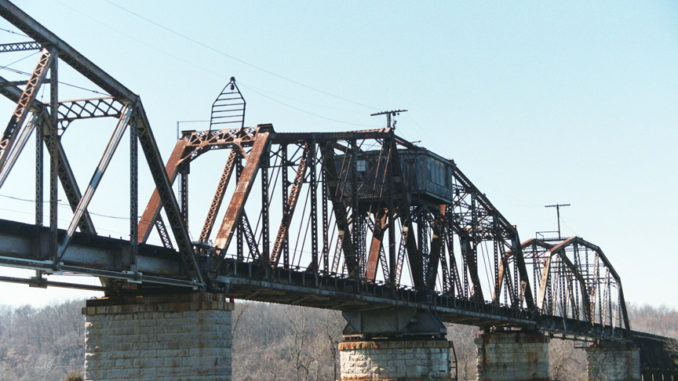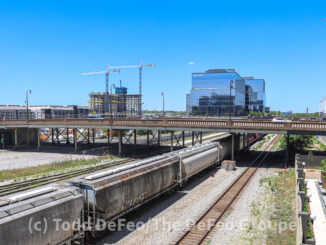
CLARKSVILLE, Tenn. — It was an “appalling catastrophe,” the newspaper headlines proclaimed.
At about 8 p.m. on Sept. 29, 1906, a northbound Louisville & Nashville Railroad passenger train — No. 102 — steamed towards a swing bridge crossing the Cumberland River. Near the overpass, a glowing red light broke the night’s darkness, signaling for an approaching train to stop.
The swing bridge was open, waiting for the steamboat Buttorff to pass through the open swing bridge on its way to Paducah, Ky.
Suddenly, engineer Frank Porter yanked on the Johnson Bar, trying to reverse the locomotive before the train reached the open bridge.
Sparks flew from the engine and the train jolted, but was unable to completely stop before plunging into the Cumberland River.
The train’s locomotive, its tender, a mail car and a baggage car plunged into the Cumberland River. The train’s passenger coaches, however, remained on the trestle with the passengers inside, panicking and trying to find a way out of the cars.
“It seems a cruel irony of fate that after the fearful disaster, immediately the draw was closed, and the steamer passed under the bridge without any trouble or hindrance, showing that there was no necessity for an open draw,” an article appearing in the Oct. 1, 1906, edition of The Clarksville Leaf-Chronicle reads.
Porter and the train’s express messenger — Will T. Wood — were the only two fatalities in the wreck. The train’s fireman — John S. Moran — survived and “found himself clinging to an iron spike fastened to the masonry of a bridge pier,” Dennis Mize wrote in his 1999 book, L&N’s Memphis Line.
“My first impression was that the train had stopped very suddenly and violently,” said R.L. Morris, baggage master on the train. “I knew distinctively that this meant danger of some character. … At the moment that I sensed danger, I ran to the back end of the car and started to jump, thinking that a terrible wreck was imminent. Then the car turned turtle and went down. It was all over so quickly that I have little recollection of subsequent events.”
In an interview with The Clarksville Leaf-Chronicle, Moran “had little to say, however, for he had no coherent recollection of anything from the moment the locomotive took the fatal leap until he found himself struggling for life in the deep, treacherous and swirling waters,” the newspaper wrote.
“The last time I saw engineer Porter he was sitting on his seat box,” Moran told the newspaper shortly after the wreck. “I was shoveling in coal, getting ready for the hill, doing this after we had blown for signal. No word was spoken by Porter or myself. I was not looking for or paying any attention to the signals and hence did not see them. We could not have been going more than four or five miles an hour when the engine went down.”
The newspaper credited the train’s air brakes for preventing a far worse catastrophe. If not for the system, the publication predicted, perhaps all of the train’s cars would have plunged into the Cumberland River.
Ironically, the newspaper reported, after the wreck, the steamboat easily passed under the closed bridge.
Published in the February 2004 edition of The Cross-Tie.





